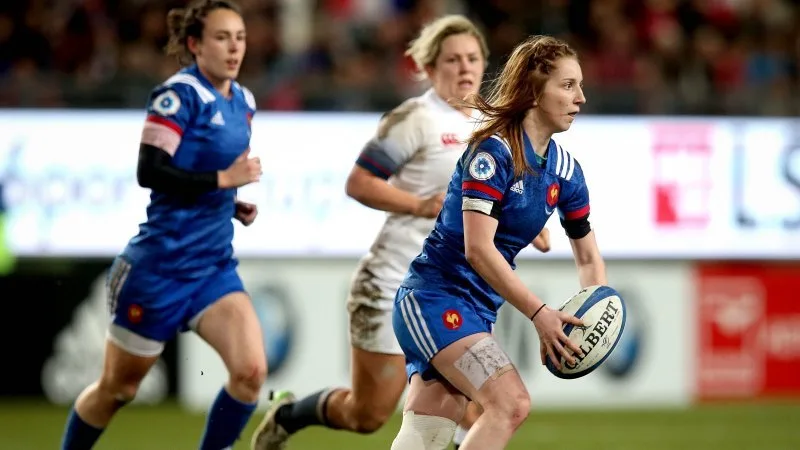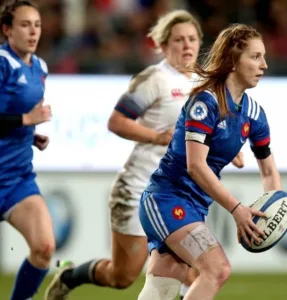Unlocking the Fullback’s Crucial Role in Defensive and Offensive Strategies
In the fast-paced world of rugby, each player has a unique role to play, contributing to the team’s overall strategy. Among these players, the fullback is a position that demands a versatile skill set and an astute understanding of both defensive and offensive strategies. This article explores the multifaceted role of the fullback, delving deep into their responsibilities, techniques, and the impact they have on the game. From defensive stalwarts to offensive catalysts, fullbacks are at the heart of rugby’s dynamic and ever-evolving strategies.
The Fullback: A Crucial Piece of the Puzzle
Defining the Fullback Position
Before we dive into the specific roles and responsibilities of a fullback, let’s define the position itself. In rugby, the fullback is typically designated as the player who wears jersey number 15. Positioned at the back of the team’s defensive formation, the fullback acts as the last line of defense, tasked with preventing the opposition from scoring tries.
A Bird’s Eye View: The Sweeper
One of the primary responsibilities of a fullback is to act as a sweeper. In this capacity, they position themselves deep in their team’s territory, providing a last-ditch line of defense. Just like a goalkeeper in soccer, the fullback’s role is to stop the opponent from crossing the try line and scoring points.
Offensive Initiator: The Attacking Fullback
While defense is a significant part of their role, fullbacks are also expected to contribute to their team’s offensive strategies. Often referred to as “attacking fullbacks,” these players possess the speed, agility, and vision to make strategic runs, join attacking lines, and create scoring opportunities.
Defensive Duties of the Fullback
The Final Barrier: Last Line of Defense
In the defensive aspect of rugby, the fullback’s role is akin to the safety in American football or the goalkeeper in soccer. They are the last line of defense, the player standing between the opposition’s attackers and the try line. This pivotal role requires unwavering composure, excellent positional awareness, and solid tackling skills.
Defusing the High Ball Threat
One of the most critical defensive tasks for a fullback is dealing with high balls and kicks from the opposition. A fullback must be proficient in catching or contesting high kicks, ensuring that possession is retained or cleared effectively. This skill is particularly crucial during tactical kicking exchanges, where territory and field position can be game-changers.
Defensive Reads and Cover Tackles
To be effective in defense, fullbacks must possess excellent reading abilities. This involves anticipating the movements of the opposing attackers and making split-second decisions on whether to engage in a tackle or hold back as a sweeper. Cover tackles, where the fullback rushes to tackle an opponent who has broken the defensive line, are another vital component of their defensive duties.
Organizing the Defensive Line
The fullback often serves as the defensive captain on the field, helping to organize the defensive line and ensure that players are in the right positions. They communicate with their teammates, making adjustments based on the opposition’s attacking patterns and exploiting weaknesses in the attacking line.
Offensive Prowess: The Attacking Fullback
Exploiting Gaps and Creating Overlaps
In addition to their defensive responsibilities, fullbacks play a crucial role in their team’s attacking strategies. They are well-positioned to exploit gaps in the opposition’s defense and create overlaps in the backline. When fullbacks join the attacking line at pace, they force the opposition to make difficult decisions, potentially leading to defensive lapses.
Counterattacking Brilliance
One of the most thrilling aspects of an attacking fullback’s role is their ability to launch counterattacks. When the opposition kicks the ball away or loses possession, fullbacks are quick to pounce. They use their speed and evasive skills to break through the defensive line, initiating fast-paced counterattacks that catch the opposition off guard.
Support Play and Linking Up
Fullbacks also serve as crucial links between the forwards and the backs. They often position themselves as a passing option when their team is building phases in attack. This role requires excellent passing accuracy and the ability to read the play, knowing when to inject themselves into the attacking line and when to hang back as a sweeper.
Kicking Game
In modern rugby, fullbacks are expected to have a well-developed kicking game. They can kick for territory, find touch, or execute precise grubber kicks or chip kicks to exploit defensive weaknesses. A fullback’s kicking game adds an extra layer of unpredictability to their team’s attack.
The Art of Field Position
Gaining Territory: The Tactical Kicking Game
Field position is a critical aspect of rugby, and fullbacks play a significant role in gaining territory for their team. Through their tactical kicking game, they can pin the opposition deep in their own half or find touch to set up lineouts in advantageous positions. This ability to control field position is a valuable asset for any rugby team.
Exit Strategies
When under pressure in their own 22-meter area, fullbacks must execute effective exit strategies. This involves clearing the ball from their own territory, relieving pressure, and setting up their team for the next phase of play. The fullback’s decision-making and execution in these high-pressure situations are vital.
Skills and Attributes of a Successful Fullback
Speed and Agility
To excel in both defensive and offensive roles, fullbacks need exceptional speed and agility. They must be quick off the mark when chasing high balls or making attacking runs. Agility is crucial for evading tacklers and making sharp cuts in attack.
Strong Tackling
Fullbacks must be reliable tacklers, as they often find themselves as the last line of defense. Solid tackling technique and the ability to bring down opponents, even in one-on-one situations, are essential for their defensive prowess.
High Ball Skills
Dealing with high balls is a specialized skill for fullbacks. They must be comfortable under the high ball, whether they are catching it cleanly or contesting it in the air. Consistency in this area is critical to prevent turnovers.
Vision and Decision-Making
Fullbacks need excellent vision and decision-making abilities. They must read the game well, anticipate the opposition’s moves, and make split-second decisions on when to attack, pass, or kick. Their choices can have a significant impact on the outcome of a match.
Communication
Clear and effective communication is a must for fullbacks. They are often the last line of defense and need to direct their teammates, ensuring everyone is in the right position. In attack, they must also communicate with the backline to coordinate moves and exploit gaps.
The Evolution of the Fullback Position
From Traditional to Modern
The role of the fullback has evolved significantly over the years, reflecting changes in the sport’s strategies and tactics. Traditionally, fullbacks were primarily defensive players, focused on providing a safe pair of hands under the high ball and ensuring the try line remained secure.
The Rise of the Attacking Fullback
In recent years, the role of the attacking fullback has gained prominence. Teams now look to their fullbacks not only for defensive stability but also as key playmakers in their attacking strategies. This shift has led to a new breed of fullbacks who are equally comfortable in both roles.
Fullbacks as Kicking Specialists
Another evolution in the role of the fullback is their increasing involvement in the kicking game. Modern fullbacks are expected to have a wide range of kicking skills, including the ability to execute accurate kicks for territory or to set up scoring opportunities.
Tactical Adaptations
Fullbacks also adapt their play to suit the specific tactics of their team. Some teams prefer a conservative, territorial approach, relying on their fullback’s kicking skills to control the game’s tempo. Others adopt a more expansive style, where fullbacks actively engage in attacking plays.
The Ever-Evolving Role of the Fullback
The fullback position in rugby is a testament to the sport’s adaptability and the evolution of player roles over time. From being primarily a defensive anchor, fullbacks have transformed into dynamic, multifaceted players who contribute significantly to both defensive stability and attacking flair.
As we’ve explored, fullbacks are the last line of defense, expert high-ball handlers, counterattacking catalysts, and strategic kickers. They possess a unique skill set that combines speed, agility, vision, and communication abilities. Whether they’re preventing tries, launching counterattacks, or orchestrating plays, fullbacks are indispensable to their teams.
The modern fullback embodies the spirit of rugby—a sport that values versatility, adaptability, and teamwork. As the game continues to evolve, so too will the role of the fullback, ensuring that this position remains a pivotal and fascinating aspect of rugby’s rich tapestry. So, the next time you watch a rugby match, keep a keen eye on the fullback, and you’ll gain a deeper appreciation for the vital role they play in the beautiful game.

